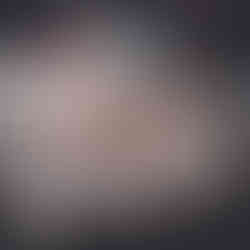MAKE A FIRE, BUSHCRAFT STYLE
- Forest Junkie

- Feb 25, 2024
- 4 min read
Updated: Dec 19, 2024
Where: All of Sweden
When: All year round
What: Make a fire bushcraft style
Maybe this is a bit of an unexpected topic, but hey, barbecuing is quite a thing here in Sweden. I'm no scout, and I'm certainly not a fire-making pro. Usually, I just try something, which can turn out frustrating. I’m sure I’m not the only one. So I thought, let's break it down and next time, we'll light that fire like a pro.
WHAT YOU NEED FOR BUSHCRAFT FIRE-MAKING
You might first think of matches or a lighter. But when you’re hiking, particularly in humid conditions, those are not always reliable. So, I’m going to make a fire bushcraft style with a ferro rod ('eldstål' or 'tändstål' in Swedish). Readily available at stores like ICA maxi, XXL, Jula, and even Rusta.

Additionally, a sharp knife comes in handy. I always have a pocket knife with me when I go into the woods, and it gets a lot of use. For food, cutting mushrooms, and now for making a fire. With your knife, you can shave or scrape curls and small chips from a branch or piece of wood. These are a great base to start a flame, the smaller the easier they will catch fire. Make sure you prepare more than you think you need. That way you won't have to starts all over again. Did you forget to bring a knife? Pieces of birch bark from dead trees also work great.

This brings us to the third point. Obviously, we need wood, dry wood. In Sweden, you often find a shed with wood at the various barbecue spots, and there’s usually an axe available too. But you can of course go look for branches yourself. It’s not allowed (and not cool) to damage trees, so look for fallen dry branches on the ground. Also, look for small twigs or chop large blocks of wood into smaller pieces. These catch fire easier than a single block.
PREPPING FOR FIRE-MAKING
Find a safe spot where the fire won’t harm nature. Preferably one of the many barbecue spots found throughout Swedish nature. (Check out the link below for a map with all barbecue spots in Sweden. Convenient!) If the ground is damp, cover it with some bark from a piece of wood, then you’ll get the fire going easier. During dry periods, first check the 'Krisinformation' website to see if it’s allowed to make an open fire due to the risk of forest fires. (I left the link below.)
Quick story time: To illustrate how fast fire can spread in the forest, in 2014, the largest piece of Swedish forest ever burned down. A large part of this area between Fagersta and Sala is now a nature reserve to monitor the development of the burned land as plants and animals return and the forest recovers. It’s called Hälleskogsbrännans Naturreservaten (6420 hectares!) and is very impressive to visit.

YOU NEED A SPARK
Back to our little fire adventure. First time I tried my hand with a ferro rod, I thought mine wasn’t working. I scraped metal against metal a few times and... nada. I can spare you this disappointment now. Turns out, most new ferro rods have a coating. You first scrape this off until you hit bare metal. Then, and only then, can that ferro rod work its magic and throw some sparks your way.
Place the metal in the wood curls to make the path from the spark to the wood as short as possible. The bigger the distance, the more the spark cools before reaching its target. It might take a while the first time, but if you’ve managed to get a flame in the wood shave, make sure there are enough wood curls nearby to catch fire without suffocating the flame. If the curls burn convincingly, add small sticks and twigs. This way, you build the fire with increasingly larger pieces of wood. If the fire smokes a lot, the wood is probably a bit damp. As the fire gets hotter, the smoke will decrease.

MIXING UP YOUR CAMPFIRE STYLES
I was just happy that I got a fire going. But once you've got the hang of that, you can get fancy with your wood stacking. For example, there's the classic teepee (which isn't as easy to stack as it looks), the lean-to fire lay where you lean smaller twigs against a larger block, the long parallel fire lay where you place twigs and wood shavings between two blocks. And then there's the Swiss method. Here, the fire is lit from top to bottom for a cleaner burn and less smoke. Stack the blocks crisscross with the bark facing down. Stack from thick to thin wood, with wood curls on top. Then you light the curls.

WRAPPING IT UP
Alrighty, bellies full? Souls rested? Time to put out that fire. Use a stick to spread out the fire remains, and wait until it no longer burns. If it’s still too hot, extinguish it with sand or water until you’re sure it’s safe to leave unattended. Most Swedish barbecue spots provide trash bins for waste disposal — leaving the area clean ensures future visitors can enjoy its beauty. Happy trails!
HELPFUL LINKS:
A map where to find all barbecue spots in Sweden:
Swedish rules on making fire: visitsweden.com/what-to-do/nature-outdoors/nature/sustainable-and-rural-tourism/the-right-of-public-access/
This website provides advice and updated information on firebans in Sweden: krisinformation.se/en/hazards-and-risks/gras--och-skogsbrand/fire-bans Hälleskogsbrännans Naturreservaten:















Comments